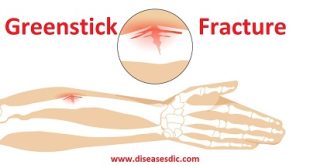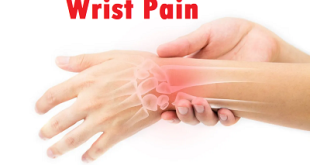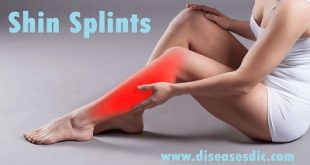Definition
Piriformis Syndrome is a disorder caused when the piriformis muscle compresses the sciatic nerve. The resulting pain, tingling, and numbness in the buttocks may be mistaken for sciatica, because the pain is along the path of the sciatic nerve. The piriformis muscle flexes with almost every motion of our hips and legs. The muscle is located deep in the buttock, behind the gluteus maximus, and connects to the upper surface of each femur (thighbone). The muscle lifts and rotates the thigh away from the body, enabling us to walk and shift our weight from one foot to another. Basically, the piriformis muscle helps us maintain balance.
Piriformis Syndrome usually only affects one hip at a time, though both hips may experience Piriformis Syndrome at some point. Having this condition once greatly increases the chance that it will recur unless you take preventative action. The sciatic nerve rests underneath the piriformis muscle; however, in about 15% of the population, the sciatic nerve passes through the piriformis muscle. People with the sciatic nerve running through the piriformis muscle are more likely to suffer from Piriformis Syndrome than others.
 Types of Piriformis Syndrome
Types of Piriformis Syndrome
There are two types of piriformis syndrome- primary and secondary:
Primary Piriformis Syndrome
Primary piriformis syndrome has an anatomical cause, with variations such as a split piriformis muscle, split sciatic nerve, or an anomalous sciatic nerve path. Among patients with piriformis syndrome, fewer than 15% of cases have primary causes. At present, there are no accepted values for the prevalence of the anomaly and little evidence to support whether or not the anomaly of the sciatic nerve causes piriformis syndrome or other types of sciatica. These findings suggest that piriformis and sciatic anomalies may not be as important to the pathophysiology of piriformis syndrome as previously thought.
Secondary Piriformis Syndrome
Secondary piriformis syndrome occurs as a result of a precipitating cause, including macrotrauma, microtrauma, ischemic mass effect, and local ischemia.
- Piriformis syndrome is most often (50% of the cases) caused by macrotrauma to the buttocks, leading to inflammation of soft tissue, muscle spasms, or both, with resulting nerve compression.
- Muscle spasms of the PM are most often caused by direct trauma, post-surgical injury, lumbar and sacroiliac joint pathologies or overuse.
- PS may also be caused by shortening of the muscles due to the altered biomechanics of the lower limb, low back and pelvic regions. This can result in compression or irritation of the sciatic nerve. When there is a dysfunction of the piriformis muscle, it can cause various signs and symptoms such as pain in the sciatic nerve distribution, including the gluteal area, posterior thigh, posterior leg and lateral aspect of the foot.
- Microtrauma may result from overuse of the piriformis muscle, such as in long-distance walking or running or by direct compression. An example of this kind of direct compression is known as “wallet neuritis”, which is a repetitive trauma caused by sitting on hard surfaces.
Epidemiology
Incidence and prevalence of piriformis syndrome is not clear, but it is suggested that piriformis syndrome is responsible for six to 36 percent of low back pain and “sciatica” cases. True prevalence is difficult to accurately determine because the diagnosis is largely clinical and is one of exclusion. Piriformis syndrome occurs frequently during the fourth and fifth decades of life; found in individuals of all occupations and activity levels. Researchers found only 26 of 3,550 complaining of sciatica were found to have piriformis syndrome. As much as 50 percent of patients with piriformis syndrome have a history of trauma direct from buttock contusion or a hip/lower back torsional injury.
Pathophysiology
The piriformis muscle is flat, oblique, and pyramidal-shaped. It originates anterior to the vertebrae (S2 to S4), the superior margin of the greater sciatic foramen, and the sacrotuberous ligament. The muscle then crosses through the greater sciatic notch and then hooks on the greater trochanter of the hip bone. When there is an extension of the hip, the muscle acts primarily as an external rotator, but when the hip is in flexion, the piriformis muscle acts like a hip adductor. The piriformis muscle receives innervation from nerve branches coming off L5, S1, and S2. When the piriformis muscle is overused, irritated, or inflamed, it leads to irritation of the adjacent sciatic nerve, which runs very close to the center of the muscle.
Sciatic nerve entrapment occurs anterior to the piriformis muscle or posterior to the gemelli-obturator internus complex, which is in line with the anatomical location of the ischial tuberosity. Piriformis can be stressed due to poor body posture chronically or some acute injury that results in a sudden and strong internal rotation of the hip.
Causes of Piriformis Syndrome
It is a neuromuscular disorder and can be caused by the following conditions.
- Anatomical variations that place the piriformis muscle abnormally close to the sciatic nerve
- Muscle swelling caused by overuse or strain
- Muscle swelling caused by muscle spasms due to the pinching of the S1 nerve
- Trauma such as a fall or the sudden twisting of the hip that injures the piriformis muscle
Symptoms
Patients with piriformis syndrome have some or all of the following symptoms:
- Chronic pain in the buttocks that may radiate to the lower leg and worsen when walking or squatting
- Pain with bowel movements
- Pain in the labia majora in women; pain in the scrotum in men
- Pain when getting up from bed
- Pain exacerbated by hip movement
- Intolerance to sitting
Symptoms of piriformis syndrome often become worse after prolonged sitting, walking or running, and may feel better after lying down on the back.
Piriformis Syndrome Risk factors
There are various risk factors that may make individuals more likely to develop piriformis syndrome.
- Some studies suggest that piriformis syndrome is more common in females by a 6:1 ratio, thought to be due to anatomical differences.
- Anatomical variation in the positioning of the sciatic nerve in relationship to the piriformis muscle may lead to piriformis syndrome. In some people, the sciatic nerve traverses through the piriformis muscle, for example, perhaps increasing the likelihood of sciatic nerve compression.
- Direct trauma or injury to the buttock area can lead to swelling, hematoma formation, or scarring, which may lead to compression or entrapment of the sciatic nerve.
- Prolonged sitting may lead to direct compression against the sciatic nerve. Piriformis syndrome has, therefore, sometimes been referred to as “fat wallet syndrome” or “wallet sciatica,” as it has been found to occur in people continually sitting against their wallet on a hard surface.
- Overuse or repetitive movements, such as occur with long-distance walking, running, cycling, or rowing can lead to inflammation, spasm, and hypertrophy (enlargement) of the piriformis muscle. This can increase the likelihood of sciatic nerve irritation or entrapment.
Complications
Undiagnosed and untreated piriformis syndrome can lead to complications such as:
- Continued pain that becomes chronic
- Increased likelihood of an unnecessary lower back surgical solution
- Inadvertent corticosteroid injection of the sciatic nerve leading to temporary mononeuropathy
- Inability to continue training or keep up an exercise routine
Diagnosing Piriformis Syndrome
There are no specific tests to diagnose this condition. Doctors often begin by reviewing a patient’s complaints and medical history. This helps to rule out other conditions such as a herniated disc. Since some doctors base their diagnosis solely on reported symptoms, piriformis syndrome can be easy to misdiagnose.
An experienced clinician, however, will use a complete medical history and exams to assess a patient. These tests may include:
- X-Rays: Although an X-ray won’t be able to detect piriformis syndrome, it can rule out other conditions like compression fractures, bulging discs, or spinal stenosis.
- Magnetic Resonance Neurography (MRI): This type of imaging allows your doctor to see just how the piriformis muscle affects the sciatic nerve.
- Complete Physical Evaluation: Doctors or even physical therapists may complete an exam to assess your physical condition. During this eval, your doctor will check your pelvis, hip joints, sacrum, and lumbar spine.
- FAIR Test: One especially effective exam involves testing the flexion, adduction, and internal rotation of the hips. These movements can cause the piriformis muscle to stretch, resulting in compression of the sciatic nerve.
Treatment
Depending on the severity of the patient’s sciatica-type pain and other symptoms, a number of treatment options may be recommended by a health care professional.
A comprehensive approach to managing piriformis syndrome may include a combination of the following nonsurgical treatments:
Ice and Heat Therapy for Piriformis Syndrome
A simple way to help relieve discomfort at home is to apply a cold compress or heating pad to the skin over the painful area.
Ice Packs and Ice Massage
At the onset of pain, lie in a comfortable position on the stomach and place an ice pack on the painful area for approximately 20 minutes. Repeat as needed every 2 to 4 hours.
It may be more helpful to combine a gentle massage with the ice. Lie on the stomach and have someone gently massage the painful area with a large ice cube. If ice is applied directly to the skin (instead of a cold pack), limit it to 8 to 10 minutes to avoid an ice burn.
If specific activities are usually followed by increased pain, it may be a good idea to apply ice immediately following the activity.
Heat Therapy
Some people find it helpful to alternate cold with heat. If using a heating pad, lie on the stomach and place the heating pad on the painful area for up to 20 minutes. Be sure to avoid falling asleep on a heating pad, as this may lead to skin burns.
Massage
Massage is also a great way to manage your pain and speed up your muscle recovery. You could perform some self-massages or recruit the help of a massage therapist (MT). Trained MT’s can identify trigger points and use pressure to release these knots. Massage also helps to improve blood flow and reduce pain.
Physical Therapy
A PT, chiropractor, or doctor can also prescribe sets of stretching and strengthening exercises. These movements increase the strength and range of motion of the nearby muscles and joints. Typically, these exercises are demonstrated and practiced in a professional setting. Once the patient gains confidence, he or she will perform short sets of these exercises at home.
Examples of Common Exercises used to Treat Piriformis Syndrome:
Listed below you will find a series of exercises that are often used to speed up the healing process. If your condition causes severe pain, then speak with a professional before trying these out at home.
- Side Lying Hip Abduction: Lay on your side with your bottom leg bent at about a 45-degree angle. Keeping your upper leg straight, lift it slowly. Then, return to your starting position. Repeat this exercise 15 times or as tolerated. Then, turn to your other side and raise the other leg.
- Side Kick: Start in a position similar to the above. Your lower leg should be bent and you upper leg held out straight. In a smooth, controlled movement, kick your upper leg forward. Slowly return to your starting position. Repeat this exercise as tolerated and then switch sides.
- Clamshells: Lay on your side with both legs bent at about a 45-degree angle. Keeping your upper leg bent and feet together, raise it at the knee. This exercise will have your legs looking like a clamshell opening its mouth. Bring your legs back to your starting position and then repeat. Turn over to your other side and repeat the movement.
Medications for Sciatica Pain
Since most episodes of pain include some type of inflammation, non-steroidal anti-inflammatory medications (NSAIDs), such as ibuprofen or naproxen, may help decrease inflammation in the affected area.
Piriformis Steroids
For severe sciatica pain from piriformis syndrome, an injection may be part of the treatment.
Piriformis injection
A local anesthetic and corticosteroid may be injected directly into the piriformis muscle to help decrease the spasm and pain. The purpose of an injection is usually to decrease acute pain to enable progress in physical therapy.
Botox injection
For persistent piriformis spasm that is resistant to treatment with anesthetic/corticosteroid injections, an injection of botulinum toxin (e.g. Botox®), a muscle weakening agent, may be useful. The goal of the injection is to help the muscle relax and help reduce pressure on the sciatic nerve. The goal with both injections is to help the patient progress with stretching and physical therapy, so that when the effect of the injection is over the muscle will be remain stretched and relaxed.
Surgery
When other treatment options fail, you may wish to consider surgery as a last resort. A minimally invasive procedure can help to reduce muscle tension on the piriformis. In addition, your doctor may insert a tiny scope to explore the SI joint or sciatic notch. This will aid your doctor in determining just how your muscle fibers may interact with your sciatic nerve. Though this is a more aggressive approach, the overall benefits may be worth it.
Prevention of Piriformis Syndrome
There are a number of preventative techniques that will help to prevent piriformis syndrome, including modifying equipment or sitting positions, taking extended rests and even learning new routines for repetitive activities. However, there are a number of preventative measures that I feel are far more important and effective.
- Warm Up: A thorough and correct warm up will help to prepare the muscles and tendons for any activity to come. Without a proper warm up the muscles and tendons will be tight and stiff. There will be limited blood flow to the hip area, which will result in a lack of oxygen and nutrients for the muscles. This is a sure-fire recipe for a muscle or tendon injury. Before any activity be sure to thoroughly warm up all the muscles and tendons that will be used during your sport or activity.
- Avoid activities that cause pain: Running on steep terrain, excessively hard or soft ground, etc can cause unnatural biomechanical strain to the foot, resulting in pain. This is generally a sign of stress leading to injury and should be curtailed or discontinued.
- Rest and Recovery: Rest and recovery are extremely important; especially for athletes or individuals whose lifestyle involves strenuous physical activity. Be sure to let your muscles rest and recover after heavy physical activity.
- Strength and Flexibility: Strengthening and conditioning the muscles of the hips, buttocks and lower back will also help to prevent piriformis syndrome. Flexible muscles and tendons are extremely important in the prevention of most strain or sprain injuries. When muscles and tendons are flexible and supple, they are able to move and perform without being over stretched. If however, your muscles and tendons are tight and stiff, it is quite easy for those muscles and tendons to be pushed beyond their natural range of movement. When this happens, strains, sprains, and pulled muscles occur.
 Diseases Treatments Dictionary This is complete solution to read all diseases treatments Which covers Prevention, Causes, Symptoms, Medical Terms, Drugs, Prescription, Natural Remedies with cures and Treatments. Most of the common diseases were listed in names, split with categories.
Diseases Treatments Dictionary This is complete solution to read all diseases treatments Which covers Prevention, Causes, Symptoms, Medical Terms, Drugs, Prescription, Natural Remedies with cures and Treatments. Most of the common diseases were listed in names, split with categories.







